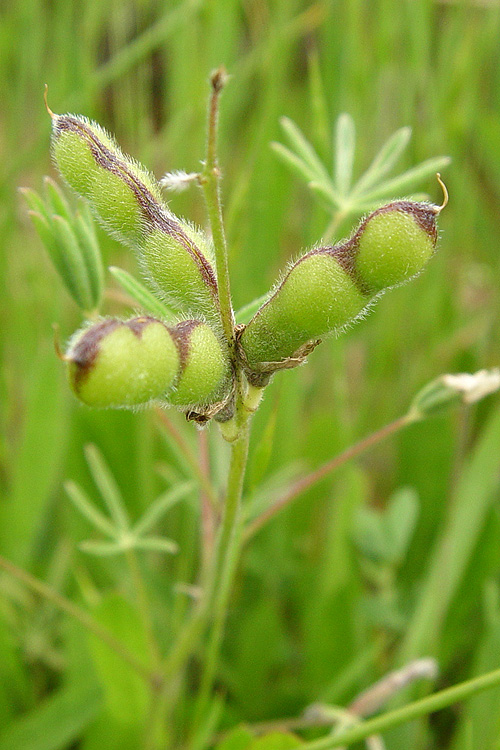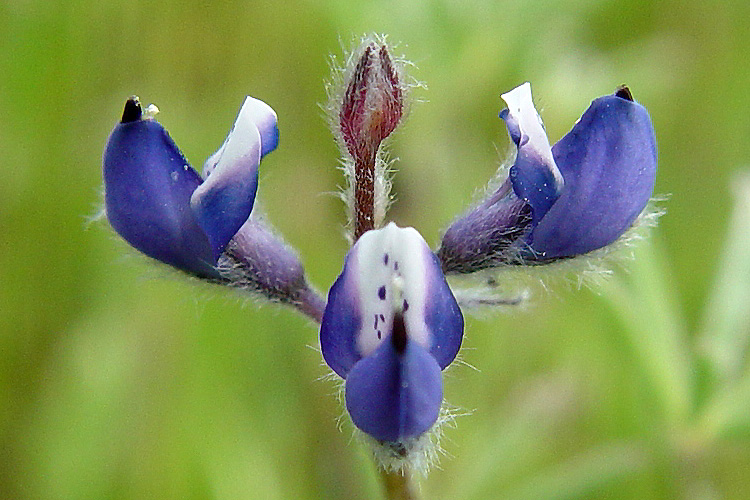Reproduction
The Lupinus bicolor is a small, fuzzy plant, and compared to some of its relatives it holds a small flower. With its compact size the anthers are in close proximity to the stigma, resulting in the ultimate conditions for self-pollinating. Its flowers are often pollinated before they open (Smith 1923). As a result of this arrangement, L. bicolor does not need a pollinator. While some Lupines do not do well self-pollinating, the L. bicolor produces very healthy offspring by this form of reproduction (Karoly 1994).
Image 6. Flower structure of L. bicolor, photo taken by Carol Witham.
Blooming from March to June (Wildflower center 2013), the flower is surrounded by bees and hummingbirds that could aid the plant in pollination (See the Interactions page for more information). However, commonly the flowers have already been self-fertilized before the bee gets there. If there was to be outcrossing, the insect would have to get to a flower soon after the flower opens, it can happen, but it is believed to be rare (Dunn 1956).
 The seeds are produced in a small fuzzy pod, which
ripen from
May to April (Evergreen College 2012). The pod is about 10-15mm long
and contains 5-8 ovules, green in color until dried, than they
become brownish. When the pod
has dried out and it is ready, the seeds are released forcefully by
the pod erupting and expelling the seeds up to 20 feet
(Dunn 1956). This happens by pressure
built up as the pod dries, it then splits open on seems.
The seeds are produced in a small fuzzy pod, which
ripen from
May to April (Evergreen College 2012). The pod is about 10-15mm long
and contains 5-8 ovules, green in color until dried, than they
become brownish. When the pod
has dried out and it is ready, the seeds are released forcefully by
the pod erupting and expelling the seeds up to 20 feet
(Dunn 1956). This happens by pressure
built up as the pod dries, it then splits open on seems.
This reproductive cycle leads to the rise of large areas inhabited by Miniature Lupines. They most likely all arose from one original seed, through self-fertilization and expelling seeds away from itself, one lone seed could, over some years, form a whole colony of Lupines (Dunn 1956).To begin new colonies, the seeds can be eaten and deposited by mice or other local wildlife. As well as carried by birds or rodents and left in a completely new location to form a population of its own.
Image 7. The fruiting structure of the Lupinus bicolor. Photograph taken by Carol Witham.
Go back to Form and Function or continue to Interactions.
